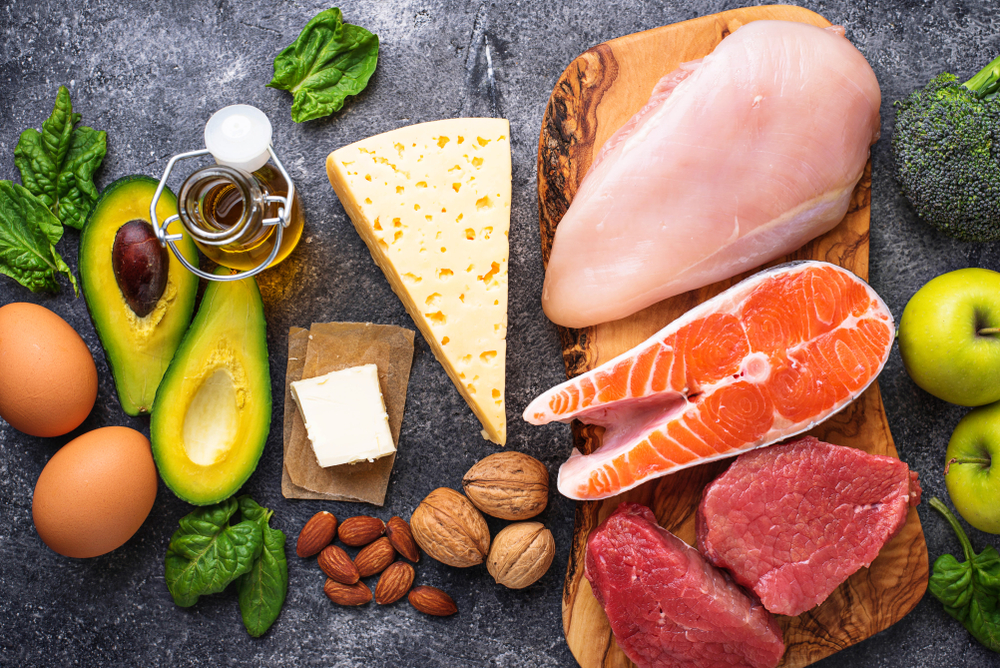The Ultimate Guide to the Atkins Low-Carb Nutritional Plan for Effective Weight Management
Discover the comprehensive guide to the Atkins low-carb diet, a scientifically backed plan that promotes weight loss through strategic carbohydrate reduction. Learn about its four phases, permissible foods, and practical tips for maintaining a healthy, enjoyable lifestyle while achieving your weight management goals. Perfect for those seeking a flexible approach to sustainable health improvement and metabolic health.

Understanding the Atkins Low-Carb Diet and Its Benefits
The Atkins diet stands as one of the most popular and scientifically supported low-carbohydrate eating plans aimed at promoting weight loss and improving overall health. By emphasizing high-protein foods and healthy fats while drastically reducing carbohydrate intake, it offers an effective strategy for those seeking sustainable weight management solutions. Over the years, the diet has undergone numerous evaluations and modifications, gaining recognition as a scientifically backed approach that not only facilitates weight reduction but also enhances metabolic health and blood sugar regulation.
The core principle of the Atkins nutritional approach is centered around decreasing carbohydrate consumption to induce a state of ketosis or fat-burning mode in the body. This shift helps suppress appetite, reduce cravings, and naturally limit calorie intake without the need for strict calorie counting. Extensive research demonstrates that low-carb diets like Atkins can be more effective than traditional low-fat regimes for sustained weight loss, metabolic improvements, and managing type 2 diabetes. While initially met with skepticism due to concerns over saturated fat intake, recent scientific literature confirms the safety and efficacy of the diet, especially when emphasizing healthy fats and unprocessed foods.
Understanding the structure of the Atkins diet involves familiarizing oneself with its four distinct phases, each designed to optimize weight loss and maintain health:
Phase 1: Induction — This initial phase involves limiting carbohydrate consumption to less than 20 grams per day for approximately two weeks. The aim is to promote quick weight loss by forcing the body to burn fat for energy. During this phase, the diet predominantly includes high-quality proteins such as meats, eggs, and seafood, along with healthy fats like olive oil, coconut oil, and avocado. Non-starchy vegetables such as leafy greens, broccoli, and peppers are encouraged, while high-carb foods are strictly avoided to jumpstart metabolic adaptation.
Phase 2: Balancing — After initial weight loss, small amounts of nuts, low-carb vegetables, and some berries are gradually introduced. The goal is to find the maximum carbohydrate intake that still allows weight loss or maintenance. During this period, monitoring food intake and weight is vital, enabling individuals to fine-tune the diet while sustaining progress.
Phase 3: Fine-tuning — As you approach your target weight, more carbohydrates, such as small portions of oats, sweet potatoes, and legumes, can be reintroduced gradually. This phase seeks to stabilize weight and prevent plateaus by slowly expanding dietary options while maintaining fat-burning.
Phase 4: Maintenance — Once the desired weight is achieved, this phase emphasizes maintaining a balanced, sustainable diet that includes a moderate amount of carbs similar to pre-diet levels. The focus shifts toward long-term lifestyle habits, incorporating all food groups in moderation to ensure weight stability and health.
While the standard Atkins plan advocates for strict carbohydrate reduction initially, variations exist that start with a more plant-friendly approach, allowing for inclusion of vegetables and fruits at the outset. This flexibility accommodates different preferences and can still produce significant weight loss outcomes. However, it's essential to avoid certain foods that can hinder progress, such as sugary beverages, grains, processed snack foods, vegetable oils high in omega-6 fatty acids, starchy vegetables like potatoes, legume-based dishes, and high-sugar fruits like bananas or grapes.
On the permissible foods side, recommended options include a variety of meats, such as beef, chicken, and pork, fatty fish like salmon and mackerel, eggs, and non-starchy vegetables like spinach, zucchini, and cauliflower. Full-fat dairy products such as cheese, yogurt, and butter are suitable, alongside nuts, seeds, and healthy oils including olive, coconut, and avocado oil. These foods help provide satiety and support metabolic health, making it easier to adhere to the diet long-term. With careful planning, individuals can enjoy meals featuring cheese, bacon, dark chocolate, and flavorful herbs, enhancing the eating experience without compromising dietary goals.
Hydration is an essential component of the Atkins lifestyle. Drinking plenty of water, along with green tea and black coffee, supports metabolism and helps curb hunger. Alcohol intake should be moderate; clear spirits or dry wines are preferable, but excess consumption can impair fat-burning processes. Eating out can be seamlessly integrated into the diet by choosing dishes rich in vegetables or with high-fat content, such as burgers with lettuce wraps or grilled meats basted with oils and sauces. With thoughtful selection and portion control, adhering to the diet in social settings remains manageable.
In conclusion, the Atkins nutritional approach offers a flexible, scientifically supported framework for achieving sustainable weight loss and improved health metrics. Combining a focus on high-quality proteins, healthy fats, and carefully selected carbohydrates, the diet emphasizes long-term lifestyle changes rather than short-term restrictions. With dedication and proper planning, individuals can enjoy flavorful meals, maintain energy levels, and achieve their health goals effectively.





